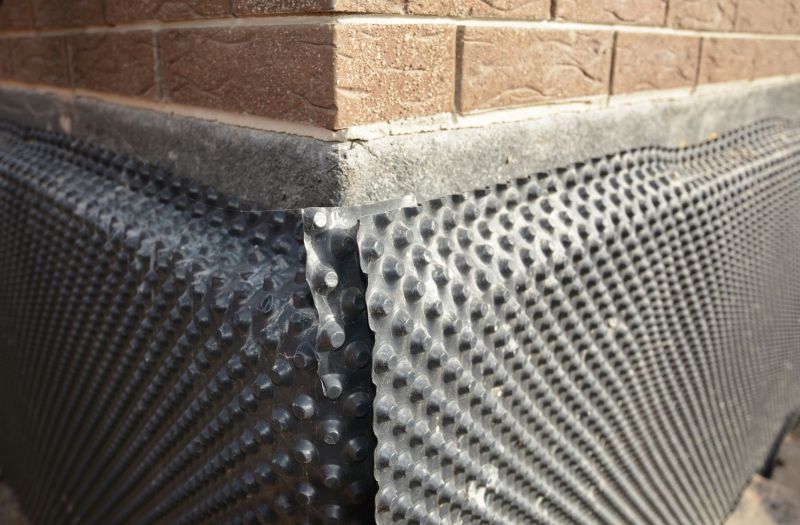Leading Waterproofing Products for Reliable Moisture Protection
Discover top-rated waterproofing solutions designed to safeguard structures and prevent water damage effectively.
 Waterproofing products are essential for protecting structures from water intrusion, which can lead to damage, mold growth, and structural deterioration over time. Whether for residential, commercial, or industrial applications, choosing the right waterproofing solutions involves understanding various product types and their specific uses. Proper application and selection can extend the lifespan of foundations, roofs, basements, and other vulnerable areas.
Waterproofing products are essential for protecting structures from water intrusion, which can lead to damage, mold growth, and structural deterioration over time. Whether for residential, commercial, or industrial applications, choosing the right waterproofing solutions involves understanding various product types and their specific uses. Proper application and selection can extend the lifespan of foundations, roofs, basements, and other vulnerable areas.
Top Overall Option
Liquid Waterproofing Membrane
A liquid waterproofing membrane offers a seamless, flexible barrier that conforms to various surfaces, making it suitable for roofs, foundations, and balcony decks. Its easy application process and adaptability to complex shapes make it a popular choice among professionals and DIY enthusiasts alike. When applied correctly, it provides an effective layer of protection against water intrusion, helping to preserve structural integrity over time.
Types of Products For Waterproofings
Liquid Waterproofing Membranes
Flexible liquid coatings that form seamless barriers on various surfaces.
Bituminous Coatings
Asphalt-based coatings ideal for underground and roof waterproofing.
Rubberized Waterproofing Sheets
Pre-formed sheets made from rubber or similar materials for durable waterproofing layers.
Polyurethane Sealants
High-performance sealants used to fill cracks and joints in concrete and masonry.
Acrylic Waterproof Coatings
Water-based coatings suitable for roofs and walls, offering ease of application.
Cementitious Waterproof Coatings
Ready-mixed cement-based formulas for basement and foundation waterproofing.
Liquid Rubber Coatings
Eco-friendly liquid coatings that create flexible, waterproof layers.
Bitumen Sheets
Self-adhesive or torch-applied sheets for roof and foundation waterproofing.
Hydrophobic Paints
Paints that repel water and protect surfaces from moisture penetration.
Waterproofing Tapes
Adhesive tapes used to seal joints, cracks, and seams in various surfaces.
Epoxy Waterproof Coatings
Durable coatings ideal for concrete surfaces exposed to water or chemicals.
Spray-On Waterproofing
Sprayable solutions for quick and uniform application on large areas.
Crack Injection Sealants
Specialized products for filling and sealing cracks in concrete structures.
Waterproofing Paints
Paints formulated to provide a water-resistant surface coating.
Flexible Waterproof Coatings
Coatings designed to accommodate movement and prevent cracking.
Polyurea Coatings
Rapid-curing, high-performance coatings for demanding waterproofing applications.
Popular Choices
Widely used for their versatility and seamless application across various surfaces.
Commonly selected for underground and roof waterproofing projects.
Preferred for their durability and ease of installation in large areas.
Popular for sealing joints and cracks in concrete and masonry surfaces.
Favored for their ease of application and suitability for roof surfaces.
Often used for basement and foundation applications due to their compatibility with concrete.
Chosen for their flexibility and long-lasting water resistance.
Common in roofing and foundation waterproofing for their robustness.
Used to add an extra layer of water resistance to walls and surfaces.
Ideal for quick sealing of joints and cracks in various surfaces.
Selected for their chemical resistance and durability in demanding environments.
Popular for large-scale applications requiring rapid coverage.
Effective for repairing and sealing structural cracks in concrete.
Commonly used to enhance moisture resistance on various surfaces.
Valued for their ability to move with surfaces and prevent cracking.
Popular in industrial settings for their rapid curing and high performance.
Different waterproofing methods cater to different needs, including liquid coatings, sealants, membranes, and paints. Liquid waterproofing membranes, for example, are versatile and can be applied to irregular surfaces, providing a seamless barrier against water ingress. Sealants are often used for joints and cracks, ensuring that even small openings are effectively sealed. Membranes, whether sheet-based or liquid-applied, form durable layers that prevent water penetration when installed correctly.
In addition to the product type, factors such as surface compatibility, ease of application, durability, and weather resistance should influence the selection process. Proper surface preparation is crucial for optimal adhesion and performance. Regular maintenance and inspections can help identify potential vulnerabilities early, ensuring the waterproofing system continues to perform effectively over time. Consulting with professionals or experienced suppliers can provide valuable insights tailored to specific project requirements.
Investing in the right waterproofing products can help protect valuable property assets, reduce long-term repair costs, and maintain structural integrity. It is important to select solutions suited to the specific environment and exposure conditions, whether for indoor or outdoor use. With a wide array of options available, understanding the nuances of each product type can lead to more informed purchasing decisions, ultimately ensuring reliable water resistance for years to come.
Key Buying Considerations
- Determine the specific area or surface to be waterproofed, such as roofs, foundations, or walls.
- Assess the environmental conditions, including exposure to water, weather, and temperature variations.
- Choose a product compatible with the surface material for optimal adhesion and performance.
- Consider the ease of application, especially if DIY installation is planned.
- Evaluate the durability and lifespan of the waterproofing solution under expected conditions.
- Check if the product is suitable for the level of water exposure, such as continuous or occasional contact.
- Review drying or curing times to coordinate with project timelines.
- Look for products that offer flexibility to accommodate surface movement without cracking.
- Ensure the product is compatible with existing waterproofing systems if applicable.
- Consider the maintenance requirements and ease of reapplication if needed.
- Research the manufacturer's reputation for quality and customer support.
- Verify safety instructions and required protective gear during application.
- Compare costs in relation to coverage area and longevity of the waterproofing solution.
- Assess the potential impact on the appearance of the surface, especially for visible areas.
- Determine if the product has been tested or certified for specific standards or codes relevant to your project.
